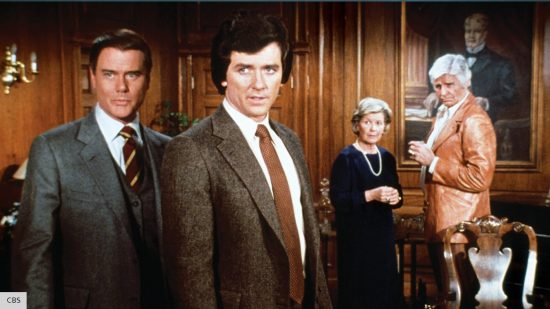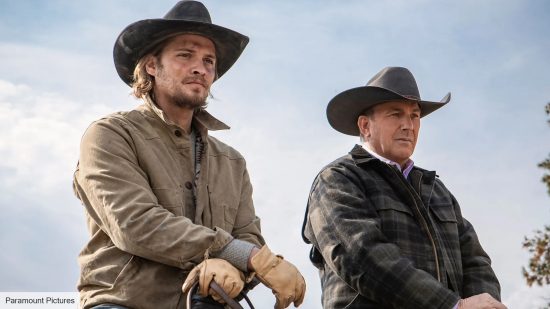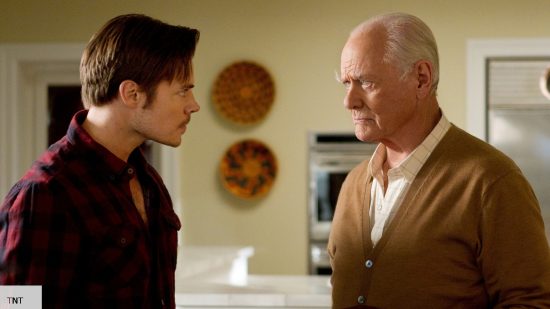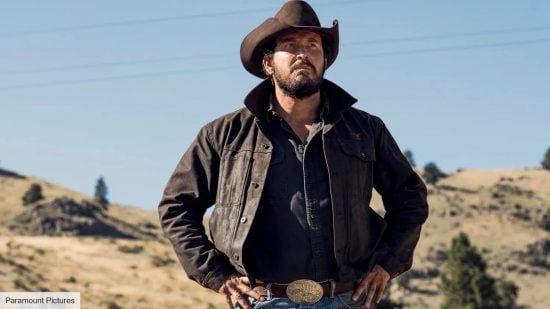It’s no secret that Yellowstone has become something of a gargantuan cultural phenomenon. With viewership in the millions and four spin-offs currently on-air and in development, the Western-inspired TV series has found a home in its legions of fans, mostly in the thick of middle America.
But with all Yellowstone’s success, it’s important to take a moment and remember the pop culture sensation that laid the groundwork for such a show to exist, let alone become as big as it has — Dallas. And as a staunch Dallas defender, I’m here, not unreasonably, to suggest that had Dallas not come to pass, Yellowstone might not have struck such spectacular gold. (Or, rather, a reported $200 million development deal.)
Now, that’s not to say that Yellowstone is riding on the coattails of Dallas — the success it has found has been achieved through its own merit. But in order to understand the world in which Yellowstone was able not just survive but thrive, we must first understand its intrinsic connection to Dallas.
Between 1978 and 1991, Dallas was the pulpy melodrama that gripped its hands around the neck of the neo-Western premise and turned it into television gold. Primetime TV was moulded by the very existence of the drama series, which quickly became one of the most well-remembered (and referenced) shows of the ‘80s. The show would then return in 2012, as a glossy revival that ran for two years.
The similarities between the two shows are evident. Both focus on incredibly affluent American families who own and operate long-standing ranches dealing with outside forces that threaten their lineage, as well as their internal feuds and power struggles. On paper, the only real distinction between the two would be that Dallas focuses on a family who made their money from oil in… well, Dallas, while Yellowstone opts for a cattle ranch in rural Montana instead.

But for all intents and purposes, Dallas’ Ewing family and Yellowstone’s Duttons are one and the same. They hate each other equally, and suffer mutually, but would rather let their respective patrimonies burn to the ground before letting an outsider get the upper hand. In Dallas, most of the conflict comes from inside the family tree, with the good-natured and honest Bobby Ewing coming to blows with his often ill-intentioned and manipulative brother, J.R Ewing, in a Cain and Abel-esque repartee. The essence of Dallas was inspiring to similar shows of the time, such as Dynasty, or The Bold and the Beautiful, in that ‘80s excess was the name of the game.
Equally, Yellowstone is a series that keeps the scandal and drama at the kitchen table. The Dutton heirs battle it out for the affection and attention of their father, John Dutton, biting and clawing for both love and power. While Yellowstone resorts to brawls and cocked rifles, the folks on Dallas duked it out by throwing drinks in each other’s faces and by exchanging an abundance of spectacular slaps.
Parallels have also been drawn from another similar familial-drama-based series — Succession. Though where the Succession characters are placed in the confines of overly slick and monotone conference rooms atop the skylines of New York, both Yellowstone and Dallas favour wide-open vistas and sprawling expanses that highlight the undeniably patriotic beauty of the US of A.

But a divide can be drawn between the two sagas. Perhaps Dallas is the glossier of the two, whereas Yellowstone finds itself leaning into the violence and harshness of the land a little further. In Dallas, they’ll get their hands literally and figuratively dirty, but the folks of Yellowstone are so rugged that it’s often hard to tell the dirt from the spit. Dallas is champagne and limousines, Yellowstone is soil and horseback. Both deserve their crowns.
You would be remiss to assume, however, that Dallas is the weaker of the pair based on its unwillingness to get down in the muck. The senior series contains just as much grit, packed to the brim with unpredictable twists, shocking revelations, and characters so flamboyant and cunning, you’d almost think the Duttons seemed pretty easy-going by comparison.
Ironically, Dallas’ biggest strength lies somewhere unexpected — in its 2012 follow-up series. Featuring the return of several prominent cast members, the new seasons reignited the heart and soul of Dallas whilst sweeping it up in a glossy new television look. And this in itself might just have been the biggest hint towards Yellowstone’s existence and success, as the welcoming back of Dallas proved that audiences still had an appetite for scandalous ranch life.

Yellowstone fans of today want for nothing. But back in the ‘80s, TV audiences took what they could get, and they damn well liked it. Although Dallas did have a spin-off in the form of the California-based Knots Landing, which ran from 1979 to 1993, it’s hard to imagine a world in which the Dallas-verse would have matched the same vast expanse of offshoots as the Yellowstone timeline. (Perhaps Dallas: 1898, where Bobby Ewing is a Daniel Plainview-style prospector striking oil the good ol’ fashion way?)
Regardless, when I say that Dallas made an impact in popular culture, this is no exaggeration. Flashback to November 21, 1980, when audiences were gripped to their seats and screens in what would later be considered as one of the most famous storylines, not only for Dallas, but in all of television.
There’s a certainty that at one point, you’ve heard someone reference, “Who shot J.R?”. That’s because, in one of the show’s most talked-about plot points, J.R Ewing was shot. This third season finale left audiences on a cliffhanger so momentous for eight whole months, that it became one of the highest-rated episodes in US television history, with an estimated 83 million American viewers tuning in to discover the conclusion. (For comparison, 10.3 million US viewers watched the Yellowstone season 4 finale).
Yellowstone is big, but in a very real sense, Dallas was bigger and much more outrageous. Audiences would invest a whole season of the show in 1985-1986, only to be completely bamboozled when the series finale would reveal that the entire season was, in fact, nothing but a dream taking place in the mind of the character Pamela Barnes Ewing. Often referred to as the ‘Dream Year’, the twist acted as a narrative blip, and wiped the canon clean from any of the events that preceded it in the season.
The reason for this insane creative decision? It was simply because Patrick Duffy, who played Bobby, wanted to quit the show, only to later be brought back due to ratings dropping and criticism towards the show for killing off a fan-favourite character. Honestly, the showmanship and complete lack of regard for any sense of reality is admirable. Yellowstone could never.

But one thing that Yellowstone has surpassed above all others in this historic and storied legacy of Western-inspired TV shows, is the lack of sheen. Yellowstone, for all its wealth, is dirty and down in the mud. And isn’t that what ranching is all about? While the Ewings are strutting about in crisp white ten-gallon hats and fur coats, the Duttons are out spilling blood for their land.
So yes, Yellowstone has taken everything we love about the grit of the old-fashioned Western, and the slick diamond-crusted world of Dallas, and combined it into one beautiful land-of-the-free, home-of-the-brave hollering package. But equally, Dallas set the blueprint for over-the-top family drama and proved that life on a ranch can be just as intoxicating and unpredictable as that of New York sky rises and Los Angeles mansions.
And to that, we say yee-haw.
For all things Yellowstone, check out our guides on the Yellowstone cast, 1923 cast, and everything we know about the 6666 release date. Don’t forget to check out all the new movies coming out this year, and the best streaming services to catch them on, too.
